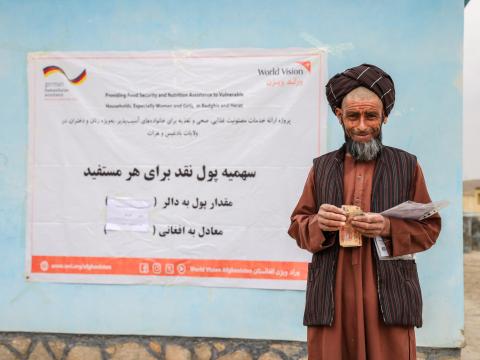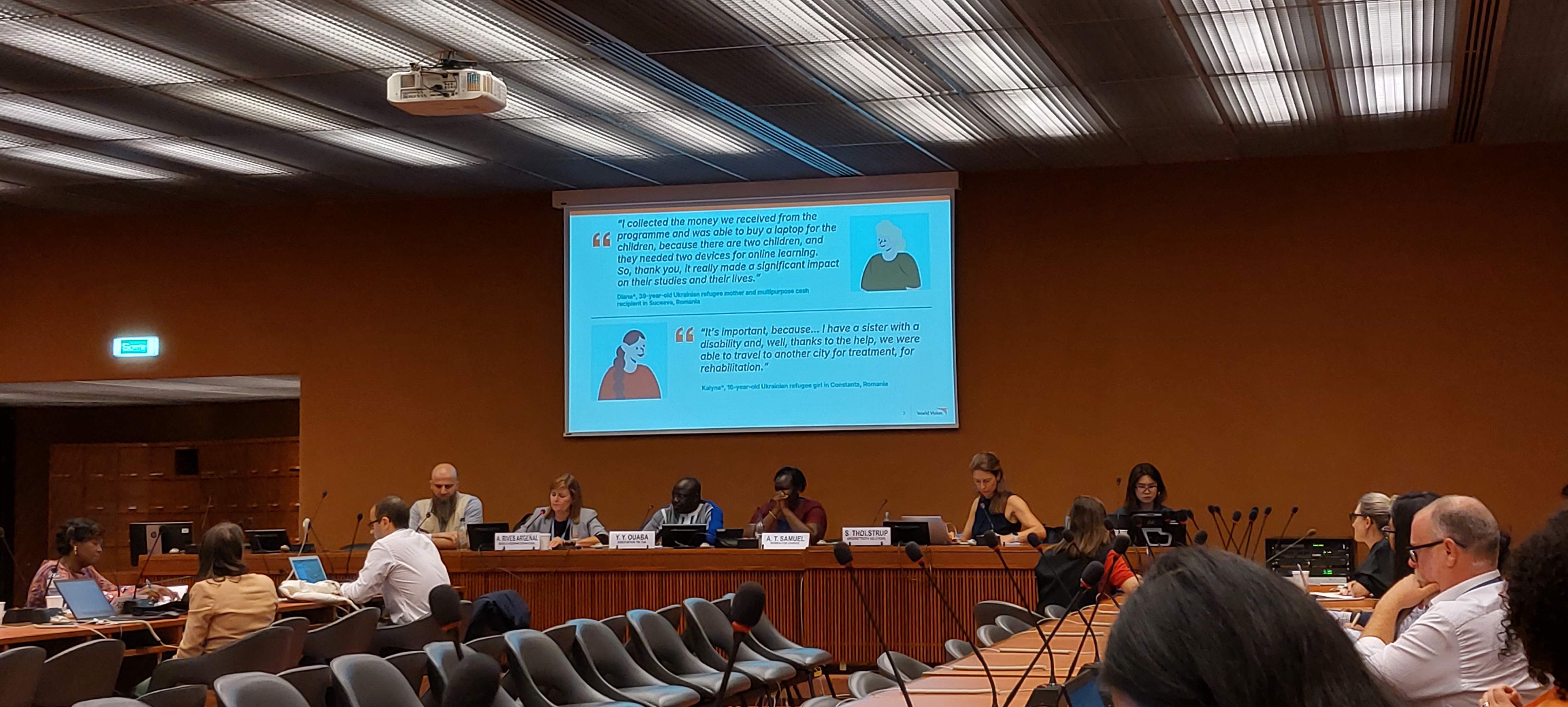People-driven humanitarian action to build sustainable pathways against child hunger

The number of people experiencing acute hunger has tripled since 2016 and doubled since COVID-19 in 2020. In 2024, 295 million people faced high levels of acute food insecurity in 53 countries/territories. Conflict and insecurity, economic shocks, and climate crises/weather extremes continue to be the primary factors contributing to food crises.
The complex and interconnected drivers of acute hunger underscore not just a challenge, but also a strategic opportunity to reimagine our humanitarian architecture and response pathways. Now more than ever, there is an urgent imperative to shift toward a people-driven approach to humanitarian response that is locally led, community-centered, and responsive to the needs of those most affected by protracted food crises. This year, to rethink how to effectively address food crises and showcase how the humanitarian system can update and re-imagine itself to meaningfully contribute to reversing the trends on acute hunger and reduce needs, ECOSOC Humanitarian Affairs Segment (HAS) had a side event focused on People-Driven Responses: The Effective Way to Combat Food Crises.
The event was organised by FAO and the ICVA Network and received the support from the Swiss Agency for Development and Cooperation and the Permanent Mission of Norway, in partnership with Ground Truth Solutions, CAFOD, Direct Aid Kuwait, and the World Food Programme.
A space was created to learn from the experience of local actors and feedback from affected communities themselves. World Vision, represented by Amanda Rives Argeñal, discussed the transformative potential of Cash and Voucher Assistance (CVA), as a preferred modality to meet recipients’ specific needs, specifically in protracted food crises, while offering flexibility, dignity, and cost effectiveness. In the current context marked by significant funding reductions, shifting towards increased use of cash assistance is a central part of the Emergency Relief Coordinator’s humanitarian reset; cash is thus the linchpin to reforms focused on effectiveness, localisation, and people-centred aid. Over the past five years, World Vision has implemented Cash and Voucher Programming in more than 50 countries, distributing over USD 1.5 billion in cash and vouchers to the most vulnerable children, their families and communities. During this period, WV has reached a yearly peak of 9.8 million people, of whom 80% were in fragile contexts and 51% were children.

In a region marked by deepening insecurity and recurrent displacement, communities across World Vision’s Middle East and Eastern Europe (MEER) are often grappling with new shocks before recovering from the last. Drawing upon the experience of these communities, World Vision’s Cash Waves research, commissioned by the MEER office in partnership with Qualisus Consulting, offers grounded insight into how CVA contributes to resilience and well-being, particularly for women and children. The study, presented by Amanda, was highlighted as unique in that it centres recipients’ perception of impact, offering valuable context for interpreting lived experiences shaped by personal histories, expectations, and broader environmental factors. By prioritising these perspectives, the research provides a more layered understanding of CVA outcomes across psychosocial, economic, and social dimensions, revealing how resilience and vulnerability often coexist. It exemplifies how external actors can best support efforts to combat the food crisis without undermining local autonomy and ownership, especially for women and girls.
The consensus during the HAS session was clear: crisis-affected communities are not passive recipients of aid, but active agents with the knowledge and experience to guide more effective, sustainable, and dignified humanitarian responses. Amongst the action-oriented outcomes and recommendations resulting from the side event, the need was identified to prioritise locally led, bottom-up approaches tailored to community needs, promote equitable partnerships which can help align humanitarian aid with long-term recovery goals and strengthen traditional coping mechanisms.
In particular, the added value of expanding cash assistance while reducing the reliance on unsolicited in-kind aid was highlighted: by adopting multi-sectoral, context-sensitive approaches, CVA can evolve from a short-term coping mechanism into a sustainable pathway for dignity, stability, and long-term resilience. In conflicts, including where there are humanitarian access constraints, local and regional actors and leadership’s roles need to be reinforced to reach the most vulnerable people, improve food security and prevent the scourge of famine. Rural communities play a vital role in building resilience and self-reliance to shocks, especially in protracted and complex food emergencies in a genuine, impactful and transformative way.
Furthermore, Trust (communities to work on their food security), Respect (those closest to the crisis with a seat at the table), Connection (between short and long-term support), and Knowledge (rooted in lived experience, context, and long-term partnerships) were identified as foundational in the humanitarian system responses to protracted food emergencies ensuring that affected communities are effectively put on a dignified and solutions-oriented track at scale.